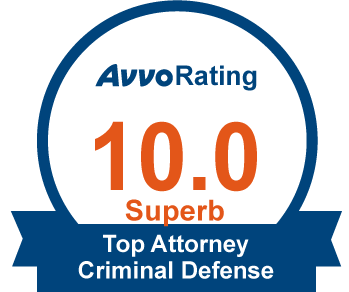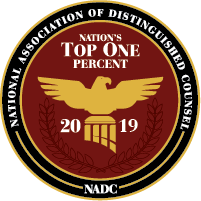Aiding and abetting is considered a serious crime with potentially life-altering consequences for the accused party. Individuals guilty of aiding and abetting in any crime could incur the same penalties as the primary perpetrator. Therefore, if you are charged with aiding and abetting in San Diego, you should consult a criminal defense lawyer. We at the Law Offices of Anna R. Yum are prepared to handle your case and help you build solid defense arguments against your aiding and abetting charges.
We can conduct a thorough investigation, help you gather evidence, and defend you in court. Our attorneys can also strive to offer customized legal services that meet your case requirements. This boosts your odds of convincing the jury or judge that you are innocent. After consulting, you will have adequate information to manage your aiding and abetting lawsuit.
Free Consultation (619) 233-4433
Understanding Aiding and Abetting Under California Law
Assisting a principal offender in committing a crime is illegal since it allows them to avoid legal consequences. The provisions of California Penal Code (PEN) 31 forbid any actions that result in aiding and abetting a crime. The law describes the crime as assisting, facilitating, or persuading another individual to commit an offense.
According to the law, everyone who aids and abets the primary offender is equally liable. Therefore, you need to know what aiding and abetting constitute. Doing so lets you decide if the prosecution team’s claims require defense arguments or if their argument is likely unsuccessful.
Aiding and abetting could occur at different periods, which means you could face legal charges even if you were aware of the act. This pointer is important for individuals who aid and abet an offense since it makes them direct accomplices. For example, assisting in moving stolen property from a crime scene makes you an accomplice and can cost you your freedom if discovered by the prosecution.
Examples of California Aiding and Abetting Crime
There are different ways of aiding and abetting depending on the underlying crime. As a result, investigators may present multiple activities related to your involvement in aiding and abetting.
Certain activities are more commonly prosecuted than others since they are the foundation for most crimes. Understanding what the prosecution considers aiding and abetting could help you prepare your defense. Examples of deeds classified as aiding and abetting include:
Serving as a Lookout When The Offenders Perpetrate the Crime
A typical example of aiding and abetting is acting as a lookout at a crime scene. Your duty could be to look out for police officers to ensure the perpetrators are not caught. This means that your duty will be to provide them with alerts or updates as needed. Your role as a watch person plays an essential part in influencing the success of the crime. It makes you an active participant in the offense being committed. So, if you are accused of being a watchperson, you need to prepare a legal argument to prove that you were not part of the act.
Legal defenses are important in lowering your chances of incurring penalties. Therefore, you can work on a defense strategy to fight the charges of serving as a lookout for the offenders while they perpetrate the offense.
Obstructing an Eyewitness or Anybody Who Could Raise An Alarm
Obstructing a third party who could alert the authorities about the illegal activity is another form of aiding and abetting. Obstruction can take numerous forms, including the false detention of a third party.
For example, you could lock the victim in an apartment until the offense is perpetrated, preventing them from finding help or contacting the authorities.
Obstruction can also occur by holding individuals hostage until the offenders have committed the illegal act. During the investigation, the prosecution team could gather evidence from surveillance footage and witnesses at the crime scene to link you to the crime. You could also be accused of obstructing a third party if you kept them from the scene.
Keeping Your Vehicle’s Engine Running
Crimes such as robbery, carjacking, and theft sometimes involve a quick series of activities. Most defendants will require one person to remain behind in a getaway car and keep its engine running, prepared to drive off. The perpetrators do this to reduce their chances of being arrested or recognized by third parties.
Assisting perpetrators by leaving the getaway vehicle’s engine running in preparation to escape the scene is considered a crime. The prosecution could argue that your involvement obstructed the police officer’s ability to arrest the perpetrators.
Driving the Getaway Car
If you drove the vehicle used to escape the crime scene, you could face accusations of aiding and abetting. Your involvement directly affects the law enforcement officers since, in most cases, they cannot keep up with you. As a result, you could be accused of obstructing the pursuit of justice.
Keep in mind that each violation involves different kinds of aiding and abetting. The prosecutor can use a different method to demonstrate that you were personally involved in the crime. Regardless, they should establish a direct connection between your assistance or support and the primary offense.
Your defense lawyer plays an essential role in uncovering flaws in the prosecution’s arguments to determine which defenses to present. Therefore, you should seek the advice of an attorney if you need legal assistance.
Elements of the Crime
The prosecution has to prove certain elements to secure an aiding and abetting conviction. These elements include the following:
-
You Knew That The Main Perpetrator Intended to Commit The Offense
Knowing the possibility of an offense occurring can affect the prosecution’s decision to press charges. In court, the prosecutor focuses on showing that you were aware of the main offenders’ intent to break the law but failed to take any action to alert the authorities or halt their actions.
For example, a prosecutor can demonstrate your role by proving that you attended meetings to plan how to perpetrate the offense. They could use video footage, witness testimony, and recordings to connect you to the offenders.
Circumstantial evidence based on your activities can strengthen the prosecution’s case. For example, frequent visits to a location linked to the offenders could prove your awareness of the main perpetrator’s plan to commit a crime.
-
You Encouraged, Facilitated, or Helped Perpetrate the Illegal Act
You can face prosecution for encouraging, assisting, or supporting perpetrators in committing the act. In this situation, assisting means contributing to their illegal actions to help them achieve their goal. For example, volunteering to carry tools to the crime scene will be considered aiding.
Encouraging perpetrators could involve providing support when they share their thoughts. In some cases, you could be involved by providing new ideas or information that motivates them to continue with the crime.
Facilitation could also take several forms, such as financial support. For example, offering money to perpetrators to aid their plan is considered facilitation since you have provided them with a means of obtaining what they require.
Additionally, facilitation could include active participation, such as sending a third party to help the offenders in their crimes. For example, engaging yourself in the crime’s logistics implies that you have helped the crime.
-
You Contributed To or Helped With The Development of the Crime
Finally, the prosecutor can charge you if you promote or assist in developing an illegal plot. The accusation remains valid even if you were not involved in its implementation because your contribution will have aided its development.
Thus, the prosecution should demonstrate that you contributed to or assisted with developing the crime-related scheme. Moreover, if the prosecution can prove that you intended to encourage the offense, the offenders need not fully execute your plan.
After gathering sufficient evidence, the prosecution will seek to demonstrate that your strategy contributed to the crime in question. Depending on the conditions, the influence can be either indirect or direct.
What the Prosecution Takes Into Account When Determining Your Accomplice Status
The accomplice notion applies when you are facing charges of aiding and abetting. The prosecution should then demonstrate that you satisfy the role of an accomplice by fulfilling several factors. Without this procedure, the case could raise concerns about the fairness of the trial, which would violate your constitutional rights.
The prosecution has to demonstrate the following key points to cast you as an accomplice:
Whether or Not You Were a Companion to the Principal Offenders
Before anything else, the prosecutor needs to determine if you knew the main offenders when the offense was perpetrated. It is crucial to do this since it shows that you were involved in the planning and you encouraged or assisted in one way or another.
For example, the prosecuting attorney can speak with the investigating detectives to find out where you were before or after the offense was committed. By doing this, they will ascertain that you know the culprits, indicating your likelihood of assisting them in committing the crime.
Often, companionship is demonstrated by your willingness and capacity to assist the primary offenders. For instance, they might have given you tasks to complete and asked that you report to them. The prosecution will use witnesses who can verify this to bolster their case.
If You Were Present During the Commissioning of the Offense
The prosecution will try to show your presence at the scene and prove to the court that you aided in the perpetration. Gathering evidence that places you at the crime scene could make it easier for the prosecutor to prove their case, as your presence shows your complicity.
As such, you should anticipate that the prosecution team will collaborate with the investigating officers assigned to your case to obtain the required evidence. They can do this by obtaining security camera footage around the crime scene. Other possible evidence sources include audio recordings taken at the scene.
Prosecutors will contact potential witnesses who could have been present to testify against you. Their primary duty is to ensure that any information they gather truthfully portrays your involvement, which increases the prosecutor’s chances of winning the case.
However, the defendant’s presence is unnecessary for the prosecutor to prove their case. Sometimes, the court can review evidence of your participation, even remotely. For example, you would be subject to the same investigation and charges if you willingly and intentionally made calls to help the perpetrators.
Whether Your Involvement Was Before or After the Commission of the Offense
Finally, the prosecutor needs to show that you were either involved in the events that occurred before or after the offense’s commission. This will make it easier to distinguish between other crimes, like receiving stolen property or aiding and abetting. The prosecutor aims to demonstrate that your actions suggest you were an accomplice.
Although you might not face charges for your involvement in the crime, you could still be held responsible for any additional offenses committed by the perpetrators.
This is probably going to happen if the offenders committed multiple crimes at the same time. For example, you can commit carjacking and theft simultaneously, in which case you are guilty if you are involved in the subsequent events.
Aiding and Abetting Penalties
The role of an accomplice in committing a crime is identical to that of the principal offender under the laws of California. It means that if you are found guilty of aiding and abetting an offense, you will be prosecuted under the same laws as the main offender.
You will suffer the same penalties as the one who committed the crime. If you assisted in a crime after it was committed, you could also be charged as an accessory after the fact. According to California law, this is a separate charge that is either a felony or a misdemeanor.
Natural and Probable Consequences
If the prosecution can prove that you aided or abetted a certain crime, they also charge you with another related crime. First, the prosecuting attorney must demonstrate that you also perpetrated a related crime while committing the original offense. A sensible individual in your situation would have known that the related offense was a probable and natural outcome of the original act.
Liability of Complicity in Murder
Sometimes, the person who aids and abets another person in a homicide case faces more severe accusations than the actual offender. For example, two individuals can open fire on a victim, but only one bullet kills the target. The aider or abettor, in this case, is someone who shoots but misses, whereas a killer is the one whose shot kills the victim.
When charged, the offender can claim that they acted to defend themselves. The offender can be subject to voluntary manslaughter charges. If the aider is charged as an accomplice, they will be found guilty of murder, whereas the actual killer will only be charged with voluntary manslaughter.
Aiding and Abetting Defenses
There are multiple defenses available for charges under California PEN 31. You can challenge the criminal charges with the help of a skilled defense attorney. Some common defenses include:
You Did Not Encourage, Help, or Enable the Crime
You will not be found guilty of being an aider or abettor if you did not provide any assistance, encouragement, or aid to facilitate the criminal act.
For example, you might enter a passenger car without realizing that your driver or other people inside are about to commit a crime. You remain inside the vehicle while your driver parks and exits with the other passengers. You have no idea that they went on to rob a store. Although you were present, you did not know the offenders’ intentions. You also did not take any action to aid the perpetrators’ scheme.
Misunderstandings could arise, turning you into an accomplice. Even when you are innocent, the prosecutor could accuse you of aiding or facilitating the crime. According to PEN 31, you should not be held accountable for your involvement in a crime if you did not act on purpose.
You are Facing False Accusations
Here, the prosecution has no tangible evidence that you aided or abetted the perpetration of an offense. If you are innocent, it could be easy for someone else to make allegations that you encouraged the perpetration of the crime. A perpetrator may falsely accuse you of being the mastermind to avoid criminal responsibility.
In addition, someone could accuse you of encouraging criminal activity out of vengeance, envy, or anger. An experienced lawyer knows how to question witnesses and conduct thorough investigations. They can also defend you against aiding and abetting accusations and ensure the truth is revealed.
Choosing Not to Take Part
It is also possible to refute accusations of aiding and abetting by claiming that you chose not to participate in an illegal act. A person can withdraw from participating in a criminal act in many ways. One way is to let your accomplices know that you intend to stop participating. You can also withdraw when you have done everything you can to stop the offense from occurring.
For example, you could make plans to break into and rob a store with your friend. As your companion approaches the register to confront the cashier, you are responsible for being on the lookout. However, you change your mind as you are driving to the store. You try to convince your friend to do the same thing by telling them you are withdrawing from the crime.
Unfortunately, they are adamant and choose to rob the store alone. You make an anonymous phone call to the police, letting them know there will be a robbery at the convenience store. However, the crime had already occurred when law enforcement showed up.
The court will examine this case to see whether you clarified that you wanted out of the act and tried to prevent it from happening by dissuading your friend from participating. The court can decide not to prosecute you for robbery and release you.
No Legal Obligation to Take Action
You might know that an offense is about to occur, yet you choose to take no action to stop it. Fortunately, you can only be charged if you are legally obligated to act.
Under PEN 31, you cannot be accused of aiding and abetting a crime if you were not legally obligated to prevent the crime from happening. The law frequently imposes legal obligations on certain individuals. You are exempt from liability as long as there is no legal duty. You cannot be charged with aiding and abetting because you know of an underlying crime.
You Perpetrated the Act Under Duress
It is also possible to claim that you did not want to help or facilitate the commission of an offense. You can argue that you assisted in the crime because you feared significant bodily harm or death, either for yourself or for someone else. Duress is a legal defense that can be used against a variety of criminal charges.
Is It Illegal To Intervene And Assist Another Person In Committing An Offense?
Aiding and abetting is defined as intervening in an offense to assist someone else in committing it.
This could involve:
- Blocking law enforcement from accessing the crime scene.
- Holding an individual down, preventing them from fighting back.
- Physically harming individuals attempting to apprehend an offender.
However, for this action to qualify as aiding and abetting, it must be carried out with knowledge of the offense. Being uninformed of the ongoing offense can serve as a defense to an allegation of assisting and abetting.
When Do Prosecutors and Police Officers File Complicity Charges?
The decision to prosecute accomplice offenses can vary depending on the nature of the crime and the authority’s pursuit of a fair outcome. Accomplice liability applies to various crimes. However, law enforcement agencies often prioritize investigating accomplice liability in felony cases rather than misdemeanors.
For example, the authorities can charge multiple accomplices involved in a complex white-collar crime scheme or drug trafficking. This is likely to lead to the cooperation of one or more offenders in prosecuting a prominent criminal organization leader. However, the authorities cannot allocate resources toward apprehending an accomplice involved in a DUI or a petty shoplifting crime.
Law enforcement agencies often pursue charges against both the main perpetrators and the accomplices for sex crimes and homicide due to the significant public safety risks associated with these crimes.
Find a Criminal Defense Lawyer in Near Me
The consequences of being charged with aiding and abetting are the same as those imposed on the main perpetrator. Therefore, you should contact a professional defense attorney to help you navigate the legal process. Our legal team at the Law Offices of Anna R. Yum can assist you in developing a strong defense if you are facing charges in San Diego. Give us a call at 619-493-3461 to discuss your case.











